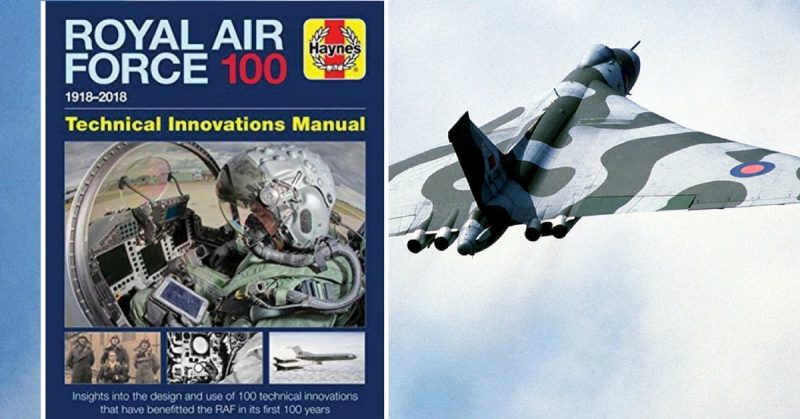This is the centenary year of Royal Air Force. It became the RAF on the 1st of April 1918 when the Royal Flying Corps and Royal Naval Air Service merged to form the world’s first independent air force.
No doubt there will be plenty of books published about the RAF as we go through its centenary year and this one from Haynes is a book with a difference that is not just about the aircraft, the pioneers, or aircrew combat history. It presents insights into the design and use of a hundred technical innovations that have benefited the RAF in those first one hundred years.
This manual is written by Jonathan Falconer; no stranger to Haynes, having already written manuals covering D-Day Operations, the de Havilland Mosquito (with Brian Rivas), Short Stirling and Handley Page Halifax. Jonathan has also written more than thirty other books on aviation and military history.
It makes a very interesting read as much as to say “who would have thought it”. Being one of the oldest air arms in the world the RAF was the first to benefit from such innovations that would help to make it more efficient, safe and ahead of the opposition in ways that some could only follow.
In respect of this major anniversary, Haynes Publishing has paid tribute to the RAF with an exciting new manual that showcases incredible inventions and innovations that have kept the service at the forefront of technology for over a century and some of which, surprisingly, have found their way into our everyday lives.
From the jet engine to radar, from the ejector seat to the bouncing bomb, the book contains a double-page spread on each innovation or technological advancement, detailing its development history and service use. Over three hundred photographs and drawings help bring each one to life.
As Jonathan Falconer mentions in his introduction this is his own choice of the top hundred innovations that have benefited the RAF. He defines innovation as the creation of new devices such as the parachute; methods like air-to-air refueling and significant ideas like the Dowding System that have been groundbreaking on their introduction.
The unforeseen benefits to humanity of a number of these innovations have been life or habit changing. Take Perspex for example; the transparent acrylic glass material used in aircraft window glazing. During the Second World War an ophthalmic surgeon treating RAF pilots whose eyes had been injured by flying shards of Perspex observed how the wounds never became infected, in sharp contrast to those involving penetration by glass and metal. The inert nature of Perspex being inside the human body led to the development of acrylic artificial corneas, which have returned sight to hundreds of millions of people worldwide. Even the microwave oven and the cordless electric kettle that we use daily and take for granted in our homes are creations from such innovations that were conceived for the Royal Air Force.
Whether you have an interest in how these innovations were first conceived for use by the RAF or in some cases followed up by other global air arms or you are interested in all aspects of the RAF, this is a story that you will find very interesting to read.
Reviewed by Paul Theobald for War History Online

THE ROYAL AIR FORCE 100 TECHNICAL INNOVATIONS MANUAL
By Jonathan Falconer
Haynes Publishing
ISBN 9781 78521 084 6
